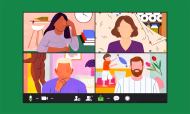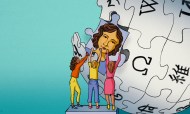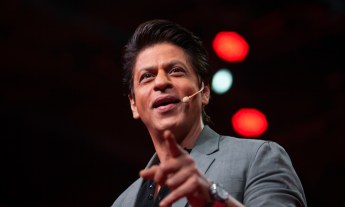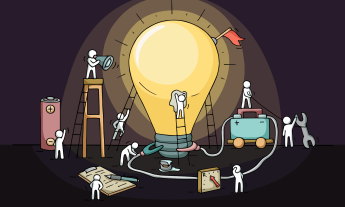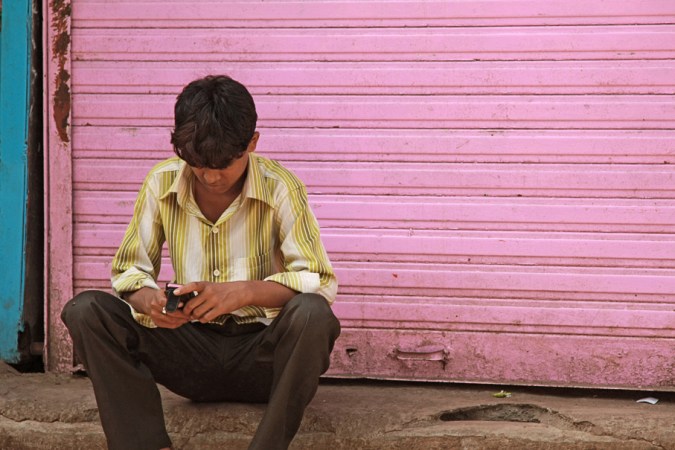
The mad race to hook up a billion of India’s people to the internet sounds daunting — but it may well make it better for everyone.
Politicians often talk about big plans. But rarely do they deliver on even a fraction of plans as huge and ambitious as Digital India, launched by Prime Minister Narendra Modi in July 2015. The nine-pillared program aims to bring nearly one billion people in India online by 2018. “I dream of a digital India where knowledge is strength and empowers the people,” Modi said at the launch. “I dream of a digital India where the world looks to India for the next big idea.”
Digital India is a big idea in itself. It thrilled India’s tech world — the country’s richest man, Mukesh Ambani, invested $37 billion in it as others applauded the government for consolidating digitization efforts that had long been fragmented. The program also aroused serious attention from Silicon Valley, with companies like Facebook, Google and Microsoft jumping to provide resources. And the program piqued the interest of filmmakers Will Sloan and Daniel Oxenhandler. The two were curious about the unique challenges of connecting India, where 73% of the population lives in rural villages and more than half of workers earn less than $2 a day. Their documentary One Billion Stories, now in postproduction, examines how widespread internet access will change India, and how the size of this new online population will actually change the internet for all of us.
Below, just a few ways the push to connect India could change the internet in ways you might notice — from the global implications of policies enacted there to big ideas that could get liftoff from expanded access.
Education can explore rather than instruct. In the town of Korakati in rural West Bengal, kids pile into a small building in a mangrove swamp. This building is “Area One,” the first freestanding location of the School in the Cloud, dreamed up by education innovator Sugata Mitra and launched with the 2013 TED Prize. Instead of sitting in desks, students huddle around computers and explore big questions — like, “How was music invented?” or “Will robots be conscious one day?” — as an educator many miles away cheers them on over Skype. In rural India, good teachers are hard to find. Many decamp for cities; for the ones who stay, absenteeism is a problem. One Billion Stories shows how the School in the Cloud fills a void for the students left behind.
But Mitra’s ambitions are even bigger. He sees his internet-powered learning method as a first step toward a new education paradigm — less about teaching lessons and more about letting kids explore information themselves. The School in the Cloud now consists of eight learning labs — five in India, two in the UK and one in the US — and an online platform that lets anyone around the world take part. More than 16,000 sessions have taken place globally, from Colombia and Jamaica to Australia. “I think examination systems around the world are going to change within the next five years,” Mitra says. “The School in the Cloud will, I hope, be remembered for having enabled the process.”
The world will get a case study on net neutrality. Providing internet access costs money. In India, cost is a key issue. “The debate becomes how do we provide internet access at a price point that people can afford,” says Sloan, “while also maintaining what makes the internet so great — its open nature and the fact that anybody can have the same experience.” Facebook offered a potential solution: Free Basics, which offered internet access — but only to a select group of sites. This drew criticism from technologists for violating the spirit of net neutrality. Tech journalist and TED Fellow Nikhil Pahwa led a movement asking the Indian government to ban Free Basics and programs like it, which it did in February. “The internet is not a menu of 100 sites, or even 1,000 sites,” Pahwa says. “It is millions and billions of sites. By giving ISPs the power to discriminate, they can play kingmaker. Our victory sets a precedent for the rest of the world.”
Net neutrality activists see programs like Free Basics as a first step toward the fragmentation of the Internet; others feel strongly that access to 100 sites is better than access to no sites. Sloan and Oxenhandler present both sides in One Billion Stories, and agree that India’s decisions will set a key global precedent. “Countries are looking at each other to understand how to regulate, govern and grow the internet,” says Oxenhandler. “Unless China opens up, India is the biggest country that’s going to experience this debate in a way that’s relevant to the rest of the world. What’s manifesting in India will have global resonance.”
Mental health care could be crowdsourced. India only has about 3,000 psychiatrists. That’s why mental health advocate Vikram Patel proposed a radical idea in his TED Talk from 2012: training everyday people to provide mental health interventions for those with depression and anxiety in their communities. Patel’s organization, Sangath, piloted a program in the Indian state of Goa, and found that lay counselors offered their patients a solid 70 percent recovery rate. Since then, Patel has focused his attention on building an online architecture for mental health treatment. This summer, he’ll launch an e-learning system for those who want to become lay counselors — one that will evolve with new research and recommendations.
“If you look at a traditional model of mental health care — the kind you see in the US,” says Patel, “you’ve got a highly trained specialist who spends 10 to 15 years in university being taught to deliver a set of psychological treatments. But those treatments change.” They’re also rigid, and Patel’s architecture could allow for more personal involvement. In the fall, Patel plans to pilot a self-care app for teenagers coping with depression and, from there, will roll out online therapy sessions, digital recordkeeping and a social media network for counselors. With a platform like this in place, Digital India could help the nation’s mental health care “springboard into the future,” says Patel. But his ambition is global. “Ultimately, we’ll have a library of treatments, so that anybody from anywhere in the world can say, ‘I want to learn this treatment,’ and can register, learn and become a community mental health provider,” he says. “Anyone with a mental health problem can go to the same site and access the self-care section.”
Medicine could go open-source. As in many countries, access to health care in India is spotty in rural areas. Internet access could connect large swaths of people to government health care services, and one could imagine online consultations with doctors gaining popularity. But could increased internet access lead to new medical discoveries? In One Billion Stories, Sloan and Oxenhandler introduce us to Open Source Drug Discovery, a project launched in India in 2008. The idea: to use a collaborative research model to develop new pharmaceuticals and make them available without patent restrictions. Nearly 8,000 people participate in the project globally, many of them in India.
“It’s incredible,” says Sloan. “In a village in the south of India, people are using the internet in an open-air lab and doing research that’s contributing to the discovery of new cures for tuberculosis. They’re producing papers that are being cited by scientists sitting half a world away.” Oxenhandler added, “It’s stay-at-home moms, farmers, schoolteachers, policeman, all kinds of different folks with access to a larger community of learners and mentors, asking a big question: How can we create cures for neglected diseases?” While the program has had controversy, it’s an interesting take on a widely noted global problem: that the market doesn’t provide incentive for companies to research diseases that affect people without money to buy drugs. “Approaches like this can open up new doors for solving some of the big challenges we face in the world,” says Sloan.
There’ll be a model for mobile-first internet. In the US and Europe, most people started connecting to the internet using dial-up modems when landlines were the norm. But this approach won’t work in India, where only about 26 million landlines exist for the population of 1.3 billion. Digital India includes an initiative to lay a broadband network — but experts tell Sloan and Oxenhandler that rollout is behind schedule. A more obvious way to connect the country: mobile phones. “There’s upwards of a billion mobile devices in circulation in India right now,” says Oxenhandler. Only a small percentage of them are smartphones, but that number is increasing quickly — it grew 54% in 2014, with domestic manufacturers selling them for as little as $70.
“India’s going to be a country that is mobile first,” says Sloan. “It has to come down to mobile operators accounting for deficiencies where the government is lacking.” This gives rise to questions of access versus openness, yes, but it also represents opportunities, he says. As the government and private sector work together to increase mobile access, India’s progress can serve as a blueprint for connecting populations in other developing countries. The Indian government has invested heavily in e-governance and mobile banking — experiments that, if successful, can provide a model for other countries on how to empower citizens with mobile tech. And because many people in India speak English, users already have a wide variety of apps to use. They’re trailblazing new ways to use them — ways available even to those who can’t read or write. “In India, people are using WhatsApp not just to send text messages, but to send voice messages. They’re using the internet as an oral medium,” says Oxenhandler. Sloan agrees. He says, “In some ways, India is experimenting in how we can redefine literacy in the era of mobile connectivity.”
And the world will get one billion new perspectives. An interesting thing happened on Quora. After launching an Android app, the number of users in India skyrocketed; today there are nearly as many users of the service in India as there are in the US. This has meant a lot more questions and a lot more answers — and, for Quora’s users, a fascinating look at the surprising similarities and differences between Indian and American culture (as well as others). One thing every expert consulted for this story agreed on: one billion new users in India means one billion new creators, and the potential for a mind-boggling amount of new content. “With every user coming online, one new perspective gets added to this global pool of knowledge,” says net neutrality activist Pahwa.
Sloan agrees. “As soon as people get online and learn not just to consume information but contribute information back, the global repository of knowledge is going to expand,” he says. And Oxenhandler sees the potential too. “There are hundreds of thousands of villages across India. If every one of them could produce just one new scientist or one new programmer, that’s really significant,” he says. “There’s profound possibilities for what this number of people means.”




